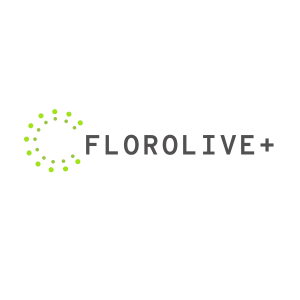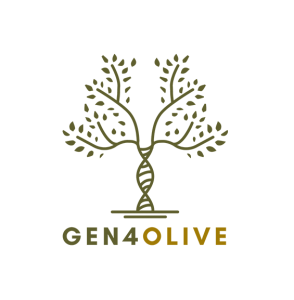Proyectos de investigación actuales
What is Gen4Olive?
GEN4OLIVE is an EU-funded Innovation Action that aims at increasing olive GenRes mobilization and encouraging pre-breeding activities by:
Our main goal
To accelerate the mobilisation of olive GenRes and to foster pre-breeding
activities around four main topics:
1- Climate change resilience.
2- Pests and diseases resilience varieties.
3- High production and high-quality varieties
4- Adaptation to modern planting systems.
Target group
· Olive Germplasm Banks
· SMEs: farmers, breeders, nurseries and olive/olive oil producers.
· Agronomic advisers and other experts.
· Biotechnology and ITs services providers.
· Academic community.
· Consumers.
· Policy-makers and responsible authorities.
· Citizenship.
AGL2016-79236-R. Florolive: caracterización de genes y miRNAs como marcadores de la transición floral en plantas juveniles y adultas de olivo. Ministerio de Economía y Competitividad. 2016-2020. IPs: D. Barranco y C. M. Diez. 157.300 €.
El olivo (Olea europea L.), es uno de los cultivos leñosos más importantes a nivel mundial, sobre todo en el área mediterránea. España es el mayor productor de aceite de oliva, representando aproximadamente el 45% de la producción global, siendo este cultivo especialmente destacable en áreas como Andalucía, que genera el 83% de la producción nacional. Actualmente, el sistema de cultivo de este frutal está cambiando drásticamente, haciendo necesario el desarrollo de variedades adaptadas a sistemas de plantación intensivos y con una mayor tolerancia frente a patógenos.

Al igual que ocurre en casi todos los frutales, el principal obstáculo para la obtención de nuevas variedades es la larga duración de su periodo juvenil (PJ). La duración de esta fase es variable y está definida por factores genéticos y ambientales. Por lo tanto, el desarrollo de marcadores capaces de predecir la duración del PJ permitiría acelerar el proceso de mejora y afrontar los posibles desafios del sector oleícola.
En nuestro proyecto previo, FLOROLIVE, identificamos dos microRNAs (miR156 y miR172) y un gen (APETALA2), que presentaban una expresión diferencial significativa entre los estados juvenil-adulto, indicando su potencialidad como marcadores de la duración del PJ. En este nuevo proyecto, FLOROLIVE+, se propone su validación a mayor escala y la optimización de una metodología patentable que permitiría acelerar de manera significativa la obtención de nuevas variedades. Para ello, se optimizará el momento y la forma de muestreo analizando periódicamente un grupo de plántulas de olivo ya en crecimiento hasta su primera floración. Además, con el fin de incrementar y consolidar la transferencia de los resultados obtenidos, se desarrollarán dos kits comerciales, uno de ellos para medir miRNAs vía RT-PCR y otro para medir proteínas vía ELISA con la colaboración de compañías biotecnológicas.
Summary
The olive tree (Olea europaea L.) is one of the most important woody crops worldwide, especially in the Mediterranean area. Spain is the largest producer of olive oil, representing approximately 45% of global production, being especially notable in areas such as Andalusia, which generates 83% of national production. Currently, olive growing is drastically changing, demanding the development of new cultivars adapted to intensive planting systems and with greater tolerance to pathogens. The primary obstacle to breeding progress is the long juvenile phase of olives; indeed, this is the main obstacle for breeding in most fruit crops. The duration of this phase is variable and is defined by genetic and environmental factors. It is therefore desirable to have genetic markers that can predict the length of juvenility in order to accelerate the breeding process and face potential challenges of the olive sector. In our previous project, FLOROLIVE, we identified two microRNAs (miR156 and miR172) and one gene (APETALA 2), differentially expressed in juvenile-adult phases, being promising predictive markers of PJ length. In this new FLOROLIVE + project, we proposed to validate the performance of these markers on larger scale and to optimize a patentable methodology that would significantly accelerate the process of obtaining of new varieties. To do so, the timing and method of sampling will be optimized by periodically analyzing a group of olive seedlings until their first flowering. In addition, to increase and consolidate the transfer of our results to breeding programs, we will develop two commercial lab kits, one of them to measure miRNAs via RT-PCR and the other to measure proteins via ELISA with the collaboration of biotechnological companies.
LIFE17 CCA/ES/000030. Prevención de Xylella fastidiosa en plantaciones intensivas de olivo y almendro aplicando prácticas de cultivo respetuosas con el medio ambiente (LIFE Resilience). European Union.
Para más información haz clic aquí
The objectives of the THOC project are:
1. Authenticate the most important commercial cultivars found in the BMGO-UCO collection and in particular those of commercial interest for the germplasm banks on the IOC network;
2. Verify the presence or absence of the pathogens indicated in the project according to the European Directive (Council Directive 2008/90/EC, Implementing Council Directive 2014/98/EU and EPPO PM/4/17): Xylella fastidiosa, Verticillium dahliae, Pseudomonas savastanoi, ArMV, CLRV, SLRV, Meloidogyne Spp. and Xiphinema;
3. Eradicate the corresponding pathogens in the event of a positive diagnosis;
4. Establish mother plants from initial plant material in the international repository of commercial olive varieties of the germplasm bank BGMO-UCO, to obtain healthy and authentic initial material;
5. Provide the participating national germplasm banks with plant material that is genetically and morphologically authenticated and healthy, ready for use and of international commercial interest.
This plant material will be the initial mother plant to be used for propagation in nurseries in IOC member countries;
6. Guarantee the identification and varietal denominations that shall facilitate the preparation of a future catalogue of the main commercial varieties.
The active participation of the olive germplasm banks of the IOC network will be fundamental to the success of this project. This will in turn help establish a global network for the conservation of olive gene resources that are authentic and sanitised, and for the use of these olive gene resources in different environments and climates. This project also aims to form a base instrument for certifying the main varieties used in international trade.
Nuevas variedades de olivo para olivar en seto. Ministerio de Economía y Competitividad. Compra Publica Innovadora 2017. 2017-2021. IP, línea 10: D. Barranco. 980.000 €.
Para más información haz clic aquí
Mantenimiento del reservorio público de variedades comerciales de olivo. MINECO-INIA: Reto de Seguridad y Calidad Alimentaria, Actividad Agraria Productiva y Sostenible.

